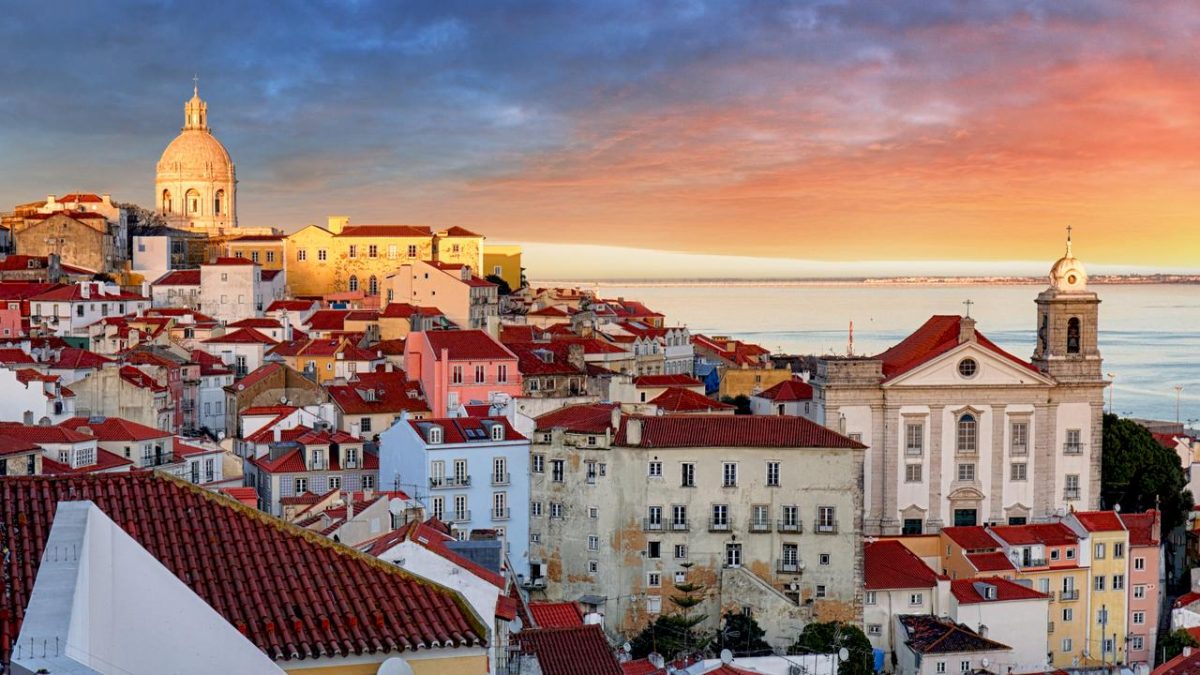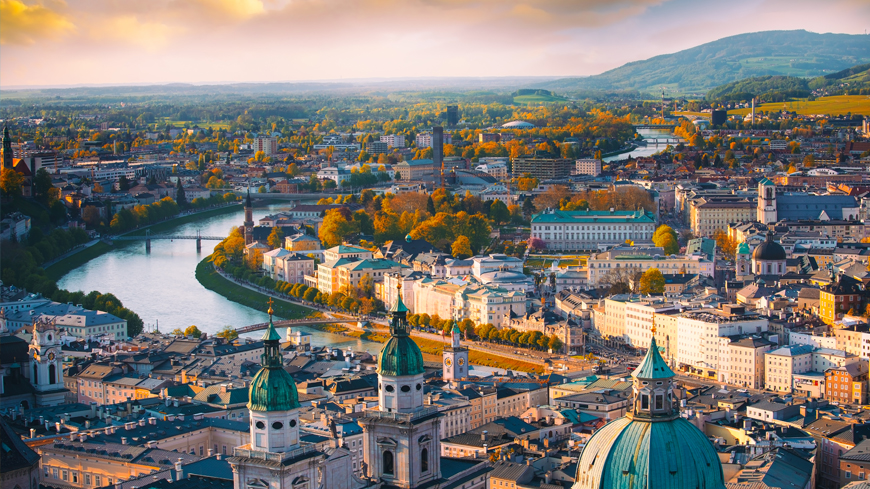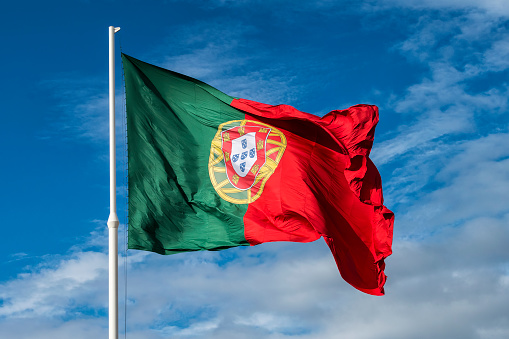Life in Portugal
How much does it cost to live in Portugal? What should your salary be? How much does it cost to rent a place and go grocery shopping? We discuss the practical aspects of living in the country, such as the Portuguese communication style, the cost of living, and other topics.
Country name: Portugal (officially República Portuguesa)
Government type: unitary semi-presidential constitutional republic
Climate: maritime temperature range
Capital: Lisbon (Lisboa)
Official languages: Portuguese (Mirandese is an officially recognized regional language)
Currency: Euro (EUR, €)
Time zone: UTC (UTC+1 in Azores)
Country calling code: +351
Driving: right side
Emergency number: 112
Each of Portugal’s 18 districts has its own municipalities (municipios), often known as concelhos. Municipalities are subsequently divided into freguesias (the Spanish equivalent of a neighborhood or a parish), which are the country’s lowest administrative entities.
You should be aware that it is compulsory to keep your ID with you at all times in Portugal and to give it to the authorities whenever asked.
Principal Embassies
Lisbon is home to the majority of Portugal’s embassies. There are consulates in Porto, Faro, and Portimo, as well as on the islands of Madeira and the Azores.
Principal Airports
Lisbon, Porto, and Faro are the three main airports in Portugal. Beja’s airport is frequently listed as one of the country’s main airports, but it only offers seasonal chartered flights.
Living Costs
The average cost of living in Portugal will vary greatly depending on where you live in the country. The most expensive cities in Portugal are Lisbon and Cascais. Porto closely follows, particularly in terms of rent prices.
Is it costly to live in Portugal? While Portugal remains one of the most affordable countries in Western Europe, low wages and comparatively high rent prices make it difficult to live here.
Portugal’s Living Costs by District and City
The country can be divided into two parts when it comes to the cost of living: the pleasant but pricey west and south coasts, and the cheap (but less inviting) middle and east side towards the Spanish border. Many of the cities and regions in this part of the country are desolate, with little job possibilities, particularly for foreigners.
As a result, only the most dynamic cities in the country were considered for the list of cheapest and most expensive cities in the country, where you are more likely to discover a lively city life as well as a wide range of work opportunities and services.
Lisbon, the country’s capital, is by far the most costly district and city. Despite Portugal’s low total cost of living, Lisbon was named one of the world’s top 100 most expensive cities. Cascais, which is still in the Lisbon region, follows closely as one of the most costly cities. Porto, as the country’s second most populous city, is also one of the most costly cities to live in.
When it comes to the most reasonably priced cities and districts, Braga, Viseu, and Coimbra are the most wallet-friendly. Rent in these cities is typically between 300 and 500 EUR (330–550 USD) per month, and you won’t spend much on groceries, dining out, or recreational activities.
Rent in Portugal’s Major Cities
The following are the average rental prices for one-bedroom apartments:
City |
Monthly Rent (EUR) |
Monthly Rent (USD) |
Lisbon |
1,100 |
1,200 |
Cascais |
1,000 |
1,100 |
Porto |
700 |
770 |
Faro |
600 |
660 |
Coimbra |
500 |
550 |
Braga |
450 |
500 |
Viseu |
400 |
440 |
In terms of utility costs in the country, for a one-bedroom apartment:
Utility |
Monthly Cost (EUR) |
Monthly Cost (USD) |
Electricity |
50 |
55 |
Gas |
20 |
22 |
Water |
30 |
33 |
Internet |
30 |
33 |
This amounts to an average of 130 EUR (140 USD) per month, but this will vary depending on your lifestyle, family size, and other factors. For example, in some urban areas, gas may not be available, in which case the costs of cooking and heating are added to the electricity bill.
Portugal’s Food Prices
A table with average grocery and alcohol prices, as well as restaurant costs, is provided below.
Groceries |
Prices EUR |
Prices USD |
Apple (one kg) |
1.50 |
1.60 |
Banana (one kg) |
1.10 |
1.20 |
Chicken (one kg) |
5.20 |
5.70 |
A dozen eggs |
1.70 |
1.80 |
Loaf of bread (500 g) |
1.10 |
1.20 |
Local Cheese (one kg) |
7.10 |
7.80 |
Milk (one liter) |
0.60 |
0.70 |
Onions (one kg) |
0.95 |
1 |
Potatoes (one kg) |
0.85 |
0.90 |
Rice (one kg) |
0.95 |
1 |
Water bottle (1.5 liters) |
0.50 |
0.55 |
Restaurant Costs |
Prices EUR |
Prices USD |
Meal at an inexpensive restaurant |
8 |
8.80 |
Meal for two at a mid-range restaurant |
30 |
33 |
Meal at a fast food chain |
6 |
6.60 |
Beer |
1.50 |
1.60 |
Water bottle |
1 |
1.10 |
Education Expenses
For the mandatory school levels, Portugal provides free education to its residents. If you choose private schools, you will incur some educational costs.
The average monthly cost of education in Portugal is as follows:
Education |
Prices EUR |
Prices USD |
Private preschool |
300 |
330 |
Basic education, private school |
400 |
440 |
International school |
800 |
880 |
Enrollment fees must be considered. These are usually around 300 EUR (330 USD) per year.
Higher Education, annual fee |
Prices EUR |
Prices USD |
Public university |
800 |
880 |
Private university |
3,000 |
3,300 |
Healthcare Expenses
Please note that healthcare in the public system is mostly free. Any costs associated with visiting a public doctor, including exams, should fall between 5 and 40 EUR (5.50–44 USD).
Healthcare |
Price EUR |
Price USD |
Seeing a private doctor |
70 |
77 |
Seeing a dentist |
50 |
55 |
Cold medicine |
5 |
5.50 |
Travel and Transportation Expenses
Mode of Transportation |
Price EUR |
Price USD |
Bus or metro ticket |
1.50 |
1.60 |
Monthly pass |
30 |
33 |
Taxi start |
3 |
3.30 |
Taxi fare (one km) |
0.50 |
0.55 |
Gas (per liter) |
1.40 |
1.50 |
New Car (Volkswagen Golf) |
25,000 |
27,500 |
Social Manners and Culture
Greeting
In Portugal, women greet people with two kisses, one on each cheek, beginning on the right. If it comes to interacting someone for the first time, however, there is no typical behavior. Some women chose a handshake, whereas others are content with two kisses. When in confusion, hesitate for them to initiate contact.
Handshakes are used by men to greet one another. This could lead to a hug or a pat on the back among best friends. In some family members, it is customary for men to kiss other men on the cheeks with two kisses.
If you’re greeted by a stranger, it doesn’t necessarily indicate they want to talk to you. In small waiting rooms, lineups, or shared places, it is typical to welcome others with a bom dia (good morning/day) or boa tarde (good afternoon).
Principles, Family, and Religion in Portugal
Family is extremely important to the Portuguese. This is especially true for youngsters, who prefer to live with their parents until they are in their late twenties, if not later. This could be due to financial constraints, although it is frequently noted that the mother’s cooking and clean washing are much valued. Portuguese houses are, in fact, still fairly conventional. Women typically perform the majority of household work, including household chores at parties and celebrations.
However, you should be aware that in Portugal, there is a huge generational divide in terms of attitudes and morals. While the large percentage of Portuguese people are traditional, conservative, and believe in Catholic values, younger generations are more aware of the present social matters and even actively support for full participation and perception.
Religion is an important part of most Portuguese children’s early life. People are baptized and receive first sacraments on a regular basis across the country. A recent study found that nearly half of young people claim to be atheists, despite the fact that up to 80percent of the inhabitants is thought to be Catholic.
Communication and the Portuguese Language
The Portuguese are very nice and welcoming, and the country is frequently referred to as one of the most inviting to expats.
The majority of people in Portugal speak English, so a communication barrier should not be a major issue. The Portuguese are trying to accommodate to newcomers and will often go out of their manner to be understood, using whatever vocabulary or gestures are required. When it comes to their social circle, however, the Portuguese try to stay to their regular circle of friends and are often hesitant to invite newcomers into their circle.
In most public situations, the Portuguese are silent. It is customarily considered rude to listen to music or talk loudly. Going out to eat , on the other hand, is a different matter. When out with friends, Portuguese people are likely to be more extroverted, comfortable, and a little noisier.
Dining habits
-
The Portuguese use a fork in the left hand and a knife in the right, as is customary in Europe. The lap is covered with fabric napkins.
-
The start of the meal is usually dictated by the host, so wait for them to say bom apetite or simply begin eating.
-
If you’re invited to eat at someone’s home, bring a small gift with you. • A bottle of wine, flowers, or chocolate could be given as a present.
-
When it comes to time, the Portuguese are very laid-back. It’s acceptable to be 15 minutes late for supper, but don’t make people wait. Arriving half an hour to an hour late for a social gathering or party is fine.
Portuguese food
The Mediterranean – type diet in the country is both tasty and nutritious. The Portuguese cuisine consists of olive oil, potatoes, rice, pork, and fish. From breakfast to supper, bread appears as an entrée, a side dish, or the main source of carbohydrates in almost every meal.
Breakfast, lunch, lanche (a light meal akin to afternoon tea), and dinner are the four meals that the Portuguese consume on a daily basis. In comparison to other European countries, dinner is usually served later in the day—between 20:00 and 22:00 on a typical weekday. It is not unusual to have supper as late as 22:00 or 23:00 when going out, particularly if restaurants are fully occupied before then.
Driving in Portugal
In Portugal, driving is relatively simple. Most cities are connected by a large number of roadways. This implies that it takes about 6 hours to go from one of the country’s northern towns to the Algarve. Nevertheless, please note that there would be numerous charges, some of which might be rather costly.
Numerous narrow and twisting roads can be found in little communities. On many numerouse two-way roads, there is barely enough space for one vehicle.
What is the Procedure for Obtaining a Portuguese Driver’s License?
In Portugal, all driving licenses issued by EU member states and the European Economic Area (EEA) are recognized. It is possible to exchange these for a Portuguese driver’s license.
Even if their license does not have to be swapped, all expatriates in Portugal must inform the IMT (Instituto da Mobilidade e dos Transportes). You must present the following documentation to one of their departments:
-
Modelo 13 IMT form
-
original and a copy of the original driver’s license
-
ID
-
proof of residence, if applicable.
Getting a New Driver’s License
Some nations have an agreement with Portugal that allows them to easily swap their licenses for a Portuguese one. Brazil, Switzerland, Morocco, Andorra, Mozambique, S. Tomé and Prncipe, United Arab Emirates, and Angola, as well as all other countries that have signed the International Convention on Road Traffic, are among them. This includes a driver’s license from the United Kingdom, but not from the United States.
You can switch your driver’s license without taking any tests, but you should do so within 185 days of receiving your residency permit or beginning to live in the nation.Requirements to Exchange Your License in Portugal
To swap your license, travel to one of IMT’s offices with the following documents:
-
original driver’s license;
-
ID and proof of residence;
-
tax number (NIF);
-
electronic medical certificate.
You may also be required to produce a mental examination from a licensed physician or psychologist for certain types of licenses.
A fee of 30 EUR is charged for updating your license (33 USD). Your driver’s license should appear in the mail shortly after that.
Exchanging a US Driving License
A US driver’s license can be exchanged for a Portuguese license, however the procedure is a little more difficult.
To verify their license is authentic and valid, these drivers must show an Abstract of Driving Record from their state of domicile in the United States to the IMT. This record must be notarized with an Apostille certificate, which is normally obtained through your state’s Secretary of State’s office.
Portugal’s Driving Laws
-
The legal driving age in Portugal is 18, but some motorcycles can be driven at the age of 16.
-
Seatbelts are required for all drivers and passengers. • You drive on the right side and overtake on the left side.
-
On motorbikes, wearing a helmet is required, and children under the age of twelve are not permitted to drive in the front seat unless they are over one and a half meters tall.
-
It is against the law to use a cell phone while driving.
-
In some metropolitan areas, the speed limit is as low as 30 km/h (18 mph). The speed limit on highways is 120 km/h (72 mph).
-
When driving, you must carry your driver’s license with you at all times.
-
All cars must have a reflective vest and a warning triangle at all times, as well as the following mandatory documentation: road tax certificate, registration paperwork, and the IPO test.
-
It is a legal need to get car insurance. You could be punished if you don’t have insurance or if your current policy has expired. You should also be aware that the individual without insurance is responsible for any expenses incurred as a result of the accident, regardless of who caused the violation.
-
Highway tolls have a unique “green” lane called Via Verde that is intended for individuals who have subscribed to the electronic toll system. There will be a fine if you use these without the right subscription and gadget in your car.If you plan on driving around the country, consider using the Via Verde. In exchange for a monthly fee, you can cross tolls around the country without stopping, and be charged for each trip at the end of the month.





1 Comment
Comme je le disais plus haut, c’est l’un des lieux les
plus touristique du Portugal ! La traversée du pont ne fait que
2 km mais ce sera l’un des trajets en voiture les plus mémorables de votre séjour à Lisbonne.
Une entreprise portugaise peut, par exemple, envoyer l’un de ses employés
pour le mettre à la disposition d’une entreprise française
en vue d’effectuer un travail dans le secteur du bâtiment.
« Le trajet Lisbonne Porto a été l’itinéraire sur lequel TAP a transporté le plus de passagers en 2017, atteignant un total de 726 000 passagers,
soit 8% de plus que sur 2016″, a révélé la compagnie portugaise.
En revanche, la compagnie exploitante avait en charge l’acquisition des locomotives, des
voitures et des wagons ainsi que l’outillage des ateliers de réparation. Les frais sont à votre charge.
Les véhicules Monospace en location sont proposés au sein du réseau
Rent A Car avec sept vraies places assises.